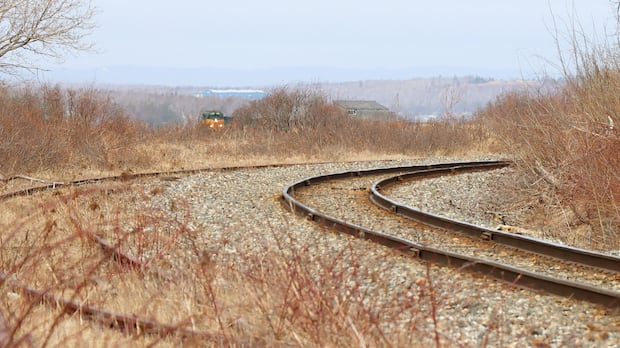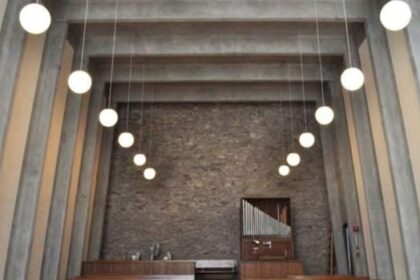Nova ScotiaA new study from Cape Breton University says the first phase of a commuter train system in Cape Breton Regional Municipality could be ready to go in three years at an estimated cost of $143 million.The first phase of a commuter train system could cost $143 million and take three years to buildTom Ayers · CBC News · Posted: Nov 14, 2025 6:04 PM EST | Last Updated: 2 hours agoListen to this articleEstimated 4 minutesThe audio version of this article is generated by text-to-speech, a technology based on artificial intelligence.Light rail study for CBRM suggests it’s a good ideaA new study says electric trains could be running between Sydney and Cape Breton University in three years if funding is found to cover the estimated $143 million initial cost. Kyle Moore has the story.A new study paid for by the Nova Scotia government suggests electric trains could soon be running between Sydney River and Cape Breton University.CBU conducted the Cape Breton Regional Municipality Light Rail Transit Study, which found the first phase could be completed in three years at a cost of $143 million, if three levels of government provide the funding.Project manager Kent MacIntyre said most of the rail line already exists, left over from the community’s industrial coal mining and steel making history dating back to the last century.”This is a continuation of legacy dollars that were spent years ago on this railway, to rehabilitate it and now use it for future generations,” he said Friday. “With the shape of the track and the cost to rehabilitate it, it’s much, much cheaper than if we had to build a new railway.”The first phase of the study envisions commuter rail running 13.6 kilometres from the Walmart in Sydney River to downtown Sydney, then on to the Walmart on Grand Lake Road near the mall and then further along to the university.Future phases would extend the line to New Waterford, the airport in Reserve Mines, Glace Bay and North Sydney.Dan MacDonald, president of DMDE Engineering, says it could cost about $35 million to rehabilitate the existing tracks and build some new ones on an old tramway right-of-way. (Kyle Moore/CBC)More than a year ago, the provincial government gave CBU $610,000 to conduct the study.Premier Tim Houston and then-Economic Development Minister Susan Corkum Greek were both enthusiastic about the idea, but opposition leaders were skeptical.CBU hired Dan MacDonald, president of DMDE Engineering, to lead the study.He said rail experts from AECOM Engineering walked the existing tracks and found a lot of deficiencies, but the cost to fix them and add new track on an old tramway right-of-way would be about $35 million.”I’ve talked to experts across the country on it and … they said you don’t realize how lucky you are in CBRM that you didn’t tear up those rails, because other jurisdictions that they’re working on have torn up the things and then had to spend a fortune to replace them,” MacDonald said.CBU project manager Kent MacIntyre says the university’s enrolment has declined, but new students are being recruited and the local population is on the rise. (Kyle Moore/CBC)The study is based on what it says is a “burgeoning” student population at CBU and makes several references to increased transit ridership in CBRM due to the influx of international students. According to CBU, the university has lost more than 4,000 students over the last couple of years due to federal policy changes, but MacIntyre said CBU is recruiting and the local population is increasing.”The reduction in enrolment at CBU is temporary,” he said. “It will slowly bounce back.”Over the next period of time, we’re optimistic that we’ll start to see our population rebound quite nicely at anywhere from two to three per cent a year or more.”A map shows the proposed route of the first phase of a light rail transit system that could run from the Walmart in Sydney River, through Sydney, to Cape Breton University. (Cape Breton University)CBU says an electric train would support the province’s goal of doubling the population by 2060, help achieve its net-zero carbon emissions plans by using wind power from its turbines, and could spur economic development.The study also envisions light rail tying in with CBRM Transit’s existing bus fleet, creating stations where buses would drop off commuters.Mayor Cecil Clarke said that could take some pressure off the municipality’s need to buy new electric buses and allow the transit system to expand to other communities.He said he has already started talking to the provincial government about funding for light rail, but the key will be finding out if there’s any money for commuter transit in the federal budget.The study is exciting, but CBRM cannot pay the cost alone, Clarke said.The CBU study examines two brands of light rail commuter train, including the futuristic looking Alstom, which is made in Canada. (Cape Breton University)”It’s visionary, but we have to be practical about the budget sources and those budget sources rely on the federal government as the core.”The mayor said CBRM staff are already working out what impact electric trains could have on the need for new buses, but the municipality also has other priorities it needs to fund, such as wastewater treatment for communities on the Northside of Sydney harbour.And he said the light rail plans could complement a proposed active transportation trail along the east side of Sydney harbour.A spokesperson for Nova Scotia Public Works said in an email that provincial staff have met with CBU and CBRM on the study and they will “follow CBU on their next steps.”MORE TOP STORIESABOUT THE AUTHORTom Ayers has been a reporter and editor for 39 years. He has spent the last 21 covering Cape Breton and Nova Scotia stories. You can reach him at tom.ayers@cbc.ca.
CBU study says CBRM light rail transit is viable with government funding












